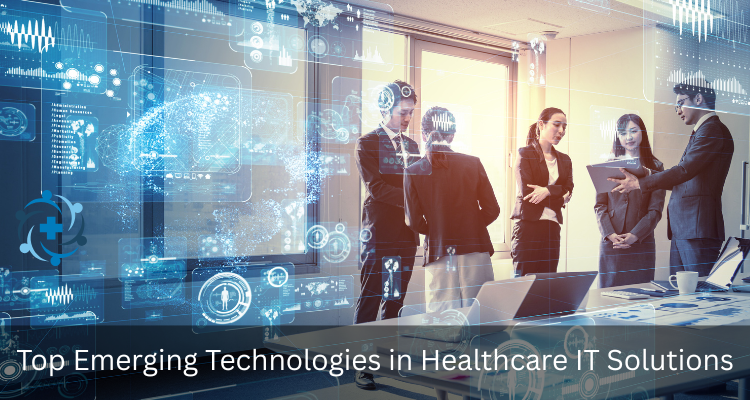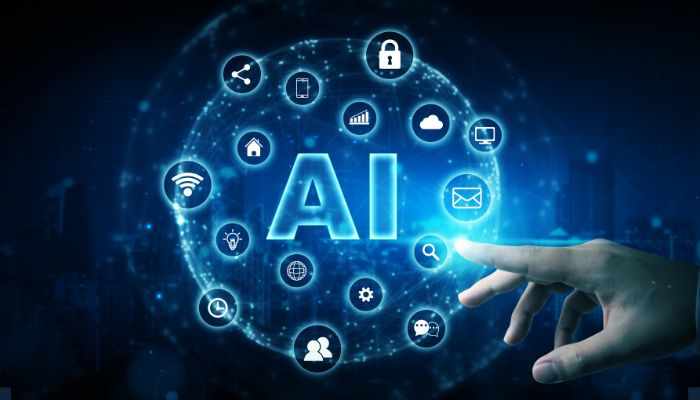
Why the Healthcare Industry Needs Technology Now
The healthcare industry is under pressure to adapt. Challenges such as rising operational costs, increasing patient expectations, regulatory complexities, and the global shortage of medical professionals have accelerated the need for advanced technology. Healthcare IT solutions are no longer limited to managing patient records; they are now at the core of innovation, enabling real-time decision-making, streamlining clinical workflows, and improving patient outcomes.
Emerging technologies are playing a vital role in this transformation. Healthcare organizations seeking to stay competitive and compliant must adopt these innovations thoughtfully, often with the support of a custom healthcare software development company that understands both the technical and regulatory demands of the industry.
Emerging Technologies in Healthcare IT Solutions:
1. Artificial Intelligence (AI) and Machine Learning
AI and machine learning are revolutionizing every layer of healthcare—from diagnostics and treatment recommendations to administrative optimization. AI algorithms analyze vast amounts of patient data to uncover patterns that may not be visible to human practitioners.
Applications include:
Automated diagnostics through image recognition (e.g., MRI, X-ray)
Predictive analytics for identifying at-risk patients
Chatbots for initial consultations or FAQs
Natural language processing to convert physician notes into structured data
AI reduces diagnostic errors, shortens treatment times, and enhances personalization in care.
2. Telemedicine and Remote Patient Monitoring
Telemedicine has evolved from a convenience to a necessity. Today’s platforms enable remote consultations, real-time diagnostics, and virtual treatment follow-ups. Remote patient monitoring devices transmit health metrics such as blood pressure, glucose levels, or ECG data directly to care providers.
Custom-built telehealth platforms developed by a custom healthcare software development company can be designed to meet industry compliance standards like HIPAA or GDPR while providing robust integration with electronic health records (EHRs).
These technologies reduce the burden on healthcare facilities while improving access to care for patients in remote or underserved areas.
3. Internet of Medical Things (IoMT)
The Internet of Medical Things connects medical devices and applications to health information systems, enabling real-time monitoring, automation, and data collection. Examples include wearable fitness trackers, smart inhalers, remote ECG monitors, and connected surgical tools.
Benefits include:
Early detection of medical issues
Automated data collection for more accurate health records
Reduced hospital readmission rates
IoMT enhances the accuracy and efficiency of clinical decision-making and plays a major role in preventive and chronic care management.
4. Blockchain for Health Data Security
Security and trust are critical in healthcare. Blockchain technology introduces decentralized data storage, providing transparency, integrity, and security in the handling of sensitive medical information.
Use cases include:
Secure patient records with traceable access history
Transparent pharmaceutical supply chains
Fraud prevention in insurance and billing
Blockchain not only protects patient privacy but also enables interoperability between healthcare providers by allowing permissioned access to shared data.
5. Cloud Computing and SaaS Platforms
Cloud-based systems offer healthcare organizations the ability to scale infrastructure quickly and access critical data from anywhere. Cloud computing supports electronic medical records, telemedicine, analytics tools, and mobile health applications.
Key advantages include:
Reduced infrastructure costs
High availability and disaster recovery
Real-time collaboration across teams
Custom cloud-based healthcare solutions ensure data security, interoperability, and scalability—all tailored to the organization’s specific operational and compliance needs.
6. Robotic Process Automation (RPA)
RPA automates repetitive administrative tasks such as claims processing, billing, appointment scheduling, and data entry. These bots mimic human actions in digital systems, improving speed and reducing human error.
By streamlining backend operations, RPA allows healthcare staff to focus more on patient-centric activities, ultimately improving operational efficiency and patient satisfaction.
7. Augmented Reality (AR) and Virtual Reality (VR)
AR and VR are enhancing healthcare education and patient treatment. In medical training, VR simulations offer realistic practice environments without the risks associated with real patients. AR can assist during surgeries by overlaying critical information onto the surgeon’s field of view.
Therapeutic applications include:
Exposure therapy for PTSD
Virtual rehabilitation programs
Pain management techniques
These immersive technologies add value across both clinical and educational domains of healthcare.
8. Digital Twins in Healthcare
A digital twin is a real-time digital replica of a physical entity. In healthcare, this could mean creating a model of a patient's organ system, entire body, or even a simulation of hospital operations. These models are used to test treatment options, predict responses to medication, or improve operational planning.
For example, a digital twin of a cardiac patient can simulate how their heart might respond to a new drug, allowing physicians to customize treatment plans more accurately.
Conclusion
Healthcare is in the midst of a fundamental shift driven by technology. From artificial intelligence and remote monitoring to blockchain and digital twins, the sector is rapidly adopting tools that promise better outcomes, greater efficiency, and more personalized care.
However, successful implementation depends not just on the technology itself but on how it aligns with the organization’s needs. Partnering with a custom healthcare software development company ensures the creation of secure, compliant, and scalable IT systems that can evolve with your healthcare organization.
To remain competitive and future-ready, healthcare leaders must act now—investing in intelligent, adaptive, and forward-thinking IT solutions that truly serve patients and providers alike.


Write a comment ...